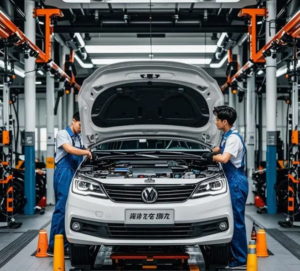Regularly changing engine oil and oil filter: Engine oil can lubricate engine components and reduce wear. According to the recommendations in the vehicle manual, replace the appropriate type of oil and filter on time.
Penapis udara dan penapis penghawa dingin: Regularly clean or replace to prevent dust and impurities from entering the engine and interior air circulation system.
Tire maintenance: including regular checks of tire pressure, wear level, and tread depth to ensure that the tires are in good condition and avoid the risk of tire blowouts.
Braking system: Check the wear of brake pads and brake discs to ensure good braking performance.
Regular inspection and replacement of spark plugs: helps improve fuel efficiency and engine performance.
Coolant: Check the coolant level and condition to ensure proper engine cooling.
Steering and suspension system: Check the ball joints, tie rods, shock absorbers and other components to ensure vehicle handling performance and driving stability.
Transmission system: Check the level and quality of the transmission oil, and replace it on time.
Electrical system: Check the battery level and electrode corrosion to ensure the normal start-up of the vehicle and the proper operation of electrical equipment.
Vehicle cleaning: not only the appearance, but also the cleaning of the engine compartment to prevent dust and debris from accumulating and affecting component heat dissipation and normal operation.
Follow the manufacturer’s maintenance manual: The maintenance requirements for different car models and brands may vary, so strictly follow the manufacturer’s recommended maintenance cycle and items for maintenance.
Choose a reputable repair and maintenance shop: use genuine parts and high-quality repair services.
Testing after maintenance: After maintenance is completed, test whether the various functions of the vehicle are normal, such as brakes, lights, air conditioning, dan lain-lain



